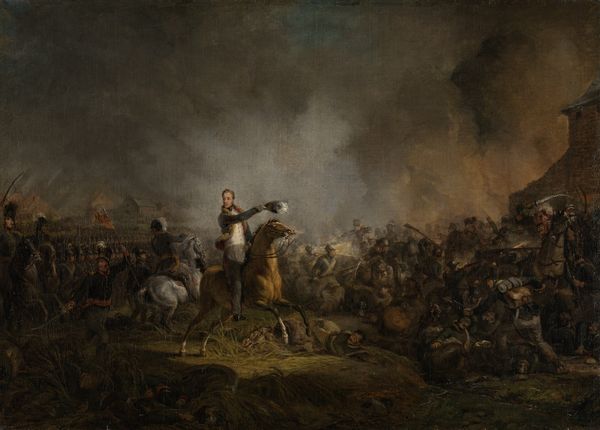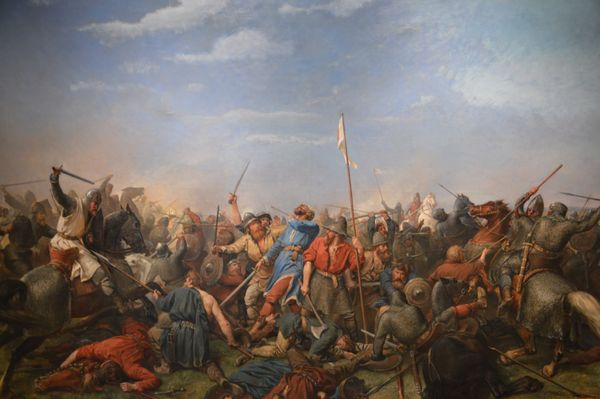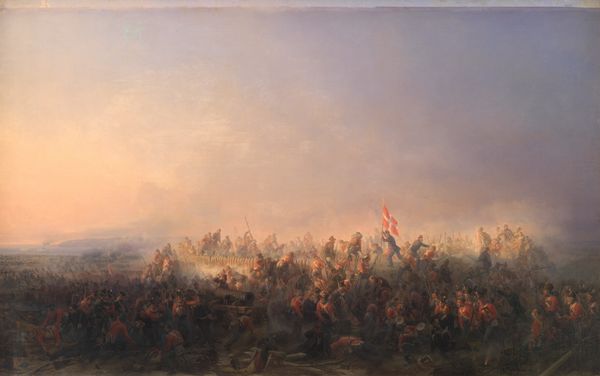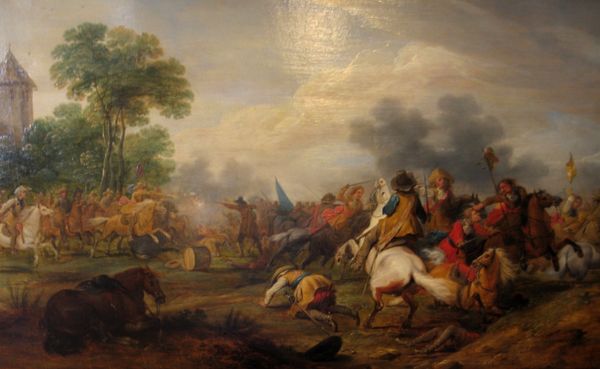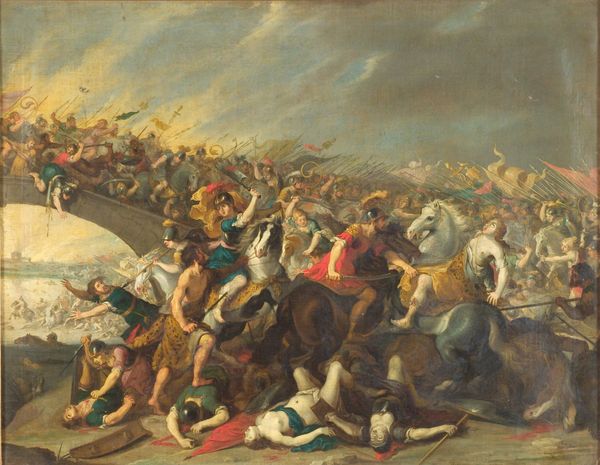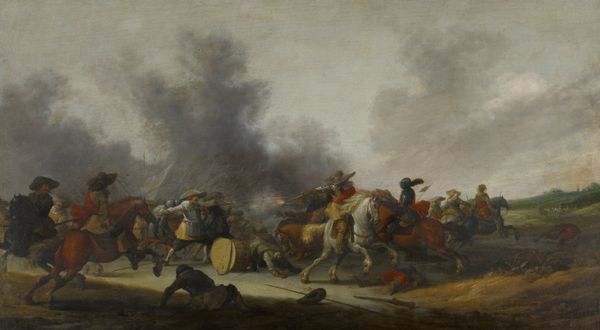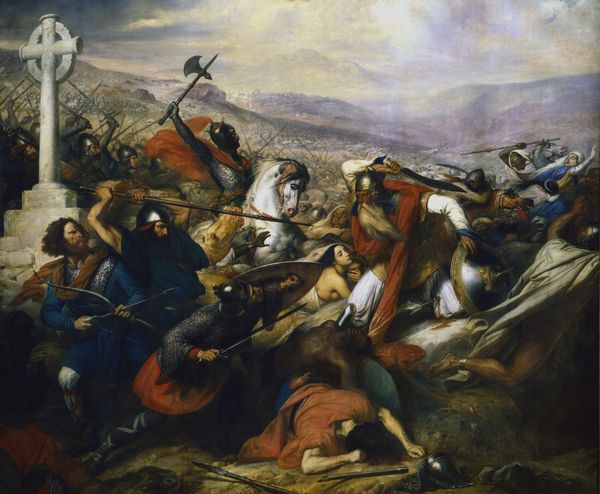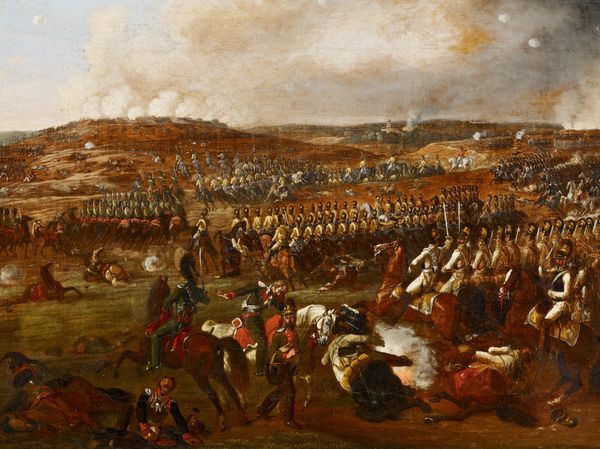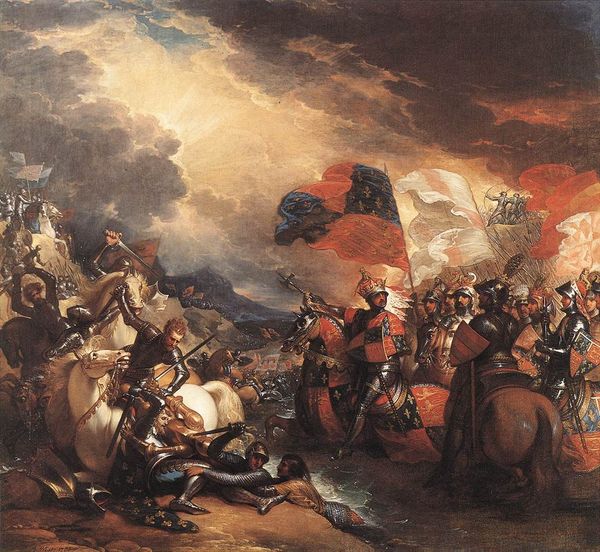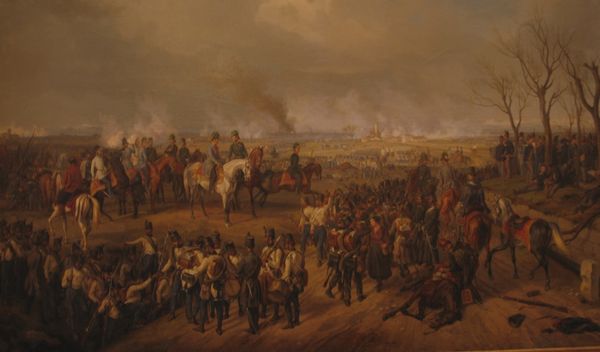
Dimensions: 57 cm (height) x 80 cm (width) (Netto)
Curator: Looking at this work by C.A. Lorentzen, dating back to 1791, what strikes you first? This imposing canvas is titled "Udfaldet på Amager 1658 under Svenskekrigen 1657-60." Editor: The chaos, definitely the chaos! And that fiery sky… it’s so dramatic. I’m getting a serious dose of Romanticism right here. All that swirling smoke makes me think of inner turmoil made visible. Curator: You’ve picked up on something significant there. The turbulent sky mirrors the historical turmoil of the Swedish Wars, and we see this moment rendered through the lens of Romantic sensibilities which celebrated emotional intensity, right? Editor: Exactly. The flag held aloft amid all this destruction is compelling—a powerful symbol, naturally. It screams, "We endure!" though half the bearers appear to be…well, not enduring so well! Curator: That's a very interesting insight. Flags operate as powerful symbols here and serve as rallying points, emblems of allegiance and ideological strength amidst the carnage of conflict. But it is hard to miss the layers of cost… Lorentzen is known for imbuing narrative scenes with a deep sense of emotional truth. Editor: Truth, or maybe ‘truths’? Because every stroke of that painterly underpainting suggests an agonizing death throe. Each fallen body narrates loss, I suppose. And you can feel the earth itself trembling with trauma… am I going too far? Curator: Not at all! Remember that Romanticism often grappled with darker themes: suffering, death, and the sublimity of nature even when manifested as violent chaos. What’s remarkable is how Lorentzen manages to imbue a specific historical event with those universal anxieties. Editor: I can practically smell the gunpowder! Considering it was created over a century after the depicted war, one wonders about the role of collective memory in crafting its narrative... Curator: It’s clear Lorentzen wasn't just interested in recording an event but tapping into enduring emotions related to war, loss, and national identity. It's powerful how symbols transform over time, carrying cultural baggage that we re-interpret each generation. Editor: Absolutely. Seeing this makes me think about how we still try to make sense of conflicts—by telling stories, visualizing events, mythologizing heroism… and facing hard truths about suffering. Curator: Precisely. It remains an affecting and surprisingly resonant work when you think about it through those intertwined lenses. Editor: Well, now I’m walking away with a newfound respect for epic historical paintings—especially ones that dare to ask difficult questions!
Comments
No comments
Be the first to comment and join the conversation on the ultimate creative platform.

